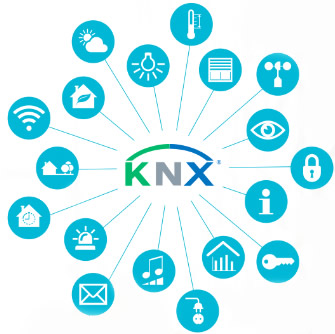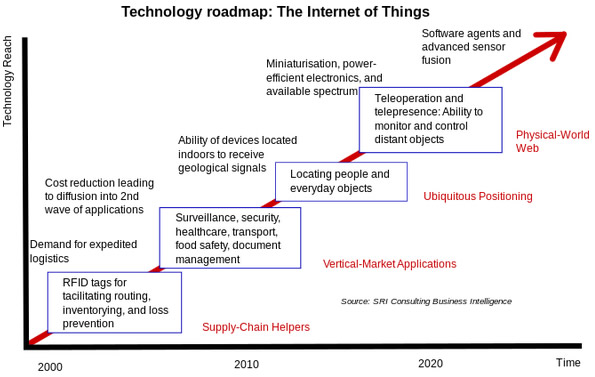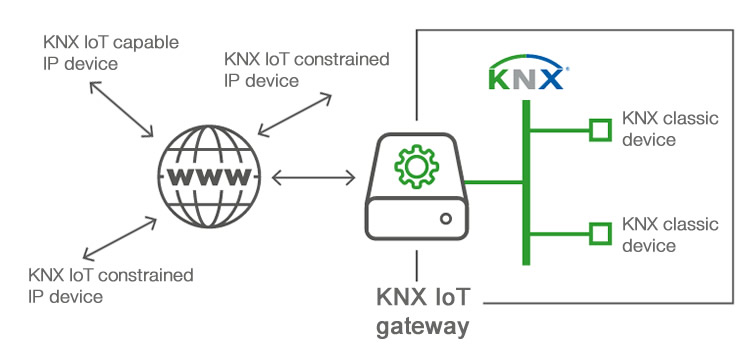 By Dries Verbrugge, KNX Association.
By Dries Verbrugge, KNX Association.
In the last couple of decades, the Internet has seen incredible growth. It is extending into more and more areas of our lives, and is now reaching into home and building automation – domains which, until recently, were only served by specific solutions that were not directly based on IP.
The Internet of Things (IoT), where everything is connected, is already a reality. This is apparent whenever we use our smartphones to check our bank accounts, or to check the current status of the power generation from our photovoltaic system, or to simply switch some lights or heating on in the home, using KNX.

Indeed KNX and the IoT were made for each other. KNX adds the benefits of third-party-certified interoperability between numerous device vendors to the IoT, whilst the IoT offers a common infrastructure to KNX.
Current IoT solutions are mainly targeted towards end-users, so consumer-based applications are easy to use and quick to get started. However, certain features are currently missing if large, reliable multi-vendor integrated installations are to be connected in a seamless and easy-to-use way.

Challenges
Although KNX installations can already be connected to the IoT, the effort required for systems integrators to do this is currently considerable due to a number of challenges.
• Application crossover
-
IoT solutions tend to use a silo approach that is targeted at specific applications such as audio/video, shading or heating control, with little crossover of functionality with other IoT products.
• Cross-vendor communication
-
If interaction between brands is possible, then it is typically only with a dedicated (open) API in conjunction with mainly, or even exclusively, cloud services, making permanent Internet connections a necessity.
The KNX IoT solution aims to overcome these shortcomings. Targeted solutions will make the following possible:
• Make KNX integrate more easily with IoT and other business markets in both directions.
• Make it easier for devices to work directly on IP as extra media.
• Add the KNX data of KNX projects to the pool of big data solutions, thus facilitating new applications and more functionality for the same value.
• Ensure that the user stays in control of their devices and the data created.
Implementing KNX IoT
The current KNX system has significant advantages when used as part of an IoT solution. These include the easy-to-wire twisted-pair ‘physical layer’, and seamless integration/commissioning using different media such as KNX RF.
The first task is to improve the integration of the current KNX system (which we will call KNX classic) and its huge amount of application-crossing functionality that is spread over decentralised KNX devices, into the IoT world.
Wires
Since IoT occurs mainly via IPv4/IPv6-based communication, our first task is to define KNX devices with new physical IP network layers. These should require low installation effort, and be open to multiple application layers.
These upcoming IP solutions will form an additional single IP network that is shared with more types of IP-based devices. This will be in addition to the KNX classic system with its mainly TP-wired ‘physical layer’ system.
Clusters
It is expected that functionally-constrained (e.g. smart light bulb, simple wall switch, battery-powered window contact) and fully-capable (e.g. touchscreen room controller) KNX IP devices will participate with KNX directly on the IP level more often, ultimately resulting in a real distributed system without the need for gateways. This might all start with a very mixed solution where the KNX classic system is coupled with the above-mentioned constrained/capable direct IP devices via a KNX IoT gateway, forming a single, connected building solution. The solution thus forms a coherent network with several types of interacting devices, such as:
• KNX classic devices (connected through one or multiple KNX IoT gateways).
• Fully KNX IoT-capable IP devices.
• KNX IoT-constrained IP devices. Depending on the physical media used, these could be connected via border router or access point – this node can optionally run more KNX IoT services. Special protocols for constrained devices will be introduced to allow smooth operation whilst lowering the number of resources necessary.

Next steps
We anticipate the following steps in order to realise these improvements:
• Standardised increased connectivity, usability and security.
-
KNX installations could be connected by specifying a URL and credentials, such as a username and password.
• KNX IoT project semantic information
-
It is essential that we further develop the KNX project semantic information – the language-independent data which is available at runtime for the participating devices. This will lower the amount of configuration required for the different devices and will make integration with external services easier.
• KNX IoT protocol features
-
WebSocket solution for direct browser communication without polling (e.g. subscribe to light changes on first floor).
CoAP protocol solution for constrained devices.
Certificate-based device security.
Ability to perform semantic queries (e.g. disable the heating in rooms where the windows are open, without stating or specifying the devices involved).
Conclusion
The KNX IoT solution will lower the barrier to access KNX technology within the Internet of Things. Its aim is to reduce the knowledge required, and open the current KNX ecosystem to non-KNX IT specialists through ‘out-of-the-box’ operation, while still allowing advanced configuration and adoption by specialists.
The KNX IoT solution is being defined in partnership with key KNX manufacturers and standardisation bodies, and we are working on proof of concepts in order to validate the solutions.
Leveraging standards ensures that the value of KNX products is increased and long-term support can be effective within the ever-changing IoT world. We already have the advantage of a large KNX install base, which allows us to draw on a wealth of experience that will help successfully extend KNX integration into the Internet of Things.
Dries Verbrugge is the KNX IoT Architect for KNX Association.












